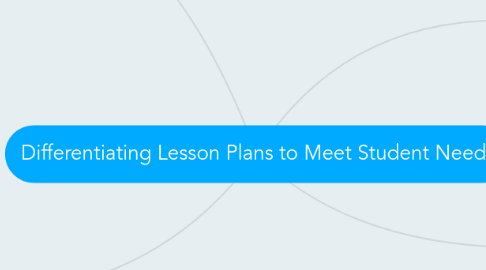
1. Learning Profiles
1.1. Kellie
1.1.1. Kellie is an visual learner.
1.1.1.1. Strategy1: During centers kelly with have the opportunity to use objects to round to the nearest tens and hundreds place. The materials at the center will include a worksheet, and a number line to assist with the worksheet.
1.1.1.2. Strategy 2: During the mini lesson I will have a powerpoint addressing the main ideas of rounding, rules of round ding, and examples of rounding using the number line. I will do a demonstration before breaking off to centers. This powerpoint will stay up until the end of the lesson/centers for kelly to refer to.
1.2. Kyle
1.2.1. Kyle is a kinesthetic learner, and works well with partners or in small group work.
1.2.1.1. Strategy 1: I will make sure to always have a interactive learning center. For example, in math centers I will have a math game at the table or allow students to plat a math game on the computer. These games are usually played with a partner.
1.2.1.2. Strategy 2: Another center I will use is "guided practice with the teacher". This interactive center will allow kyle to work hands on with manipulative, and work together with some of his classmates.
2. Readiness
2.1. Asher:
2.1.1. Asher- is having a hard time with rounding. is not confident when working independently, and struggles with verbally explaining how he got an answer.
2.1.1.1. Strategy1: Allow Asher to work with a partner on certain assignments or during centers. His partner can help him when he is stuck, and asher can gain confidence in solving problems on his own.
2.1.1.2. Strategy 2: Give praise and Class Dojo points to Asher when he has raised his hand to answer a question, or begins to work on a task independently. This shows that he is recognized for his effort.
2.2. Ava
2.2.1. Ava- Above grade level- is ahead of most students in the class. She is confident when rounding numbers to the nearest ten and hundred.
2.2.1.1. Strategy1: Allow Ava to work on computer program"Study Island" if she has completed her worksheet early. The computer program tracks progress, and progresses as student masters a skill.
2.2.1.2. Strategy2: Give Ava more challenging word problems to solve. When put in group work, she can be a group leader. The leaders usually are the students who are grasping the concept, and can help the other students in the group.
3. Objective: Students’ will be able to demonstrate rounding to the nearest 10 or 100, by manipulating numbers on a number line.
4. Interests
4.1. John
4.1.1. Is interested in science. He is always reading a non fiction book, and very curious about the solar system and earth.
4.1.1.1. Strategy 1: Will try to connect content, word, problem, and examples using science vocabulary. This will keep john engaged and interested in the lesson.
4.1.1.2. Strategy 2: Allow John to create his own rounding word problem when working in math workbooks. Suggesting he can use stars or the solar system. He can then share with the class what he came up with.
4.2. Jemma
4.2.1. Likes drawing and writing in her class journal
4.2.1.1. Strategy1: Incorporating math journals into the classroom allows Jemma to write out her own rounding word problems and draw and label her own number line.
4.2.1.2. Strategy 2: I will try to use materials such as mini white boards, or math worksheets, that allow the student to write and draw while solving equations and rounding numbers.

